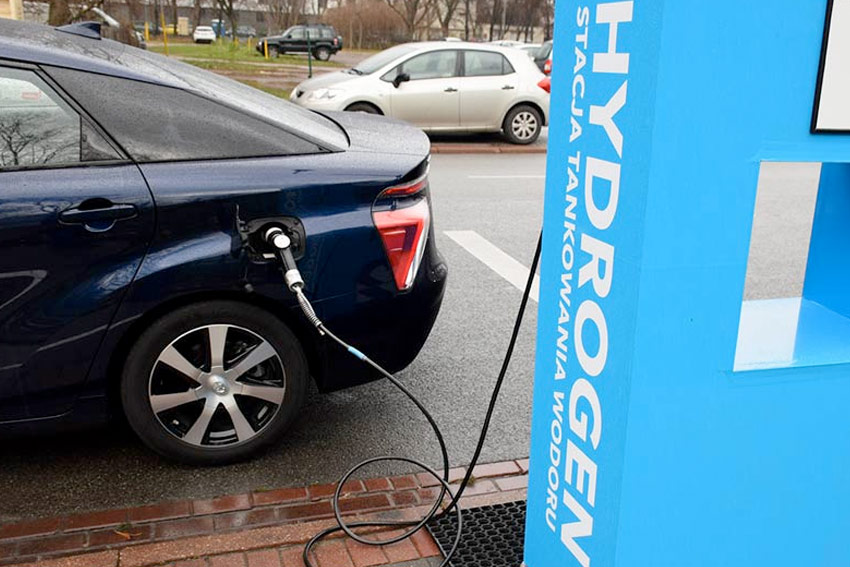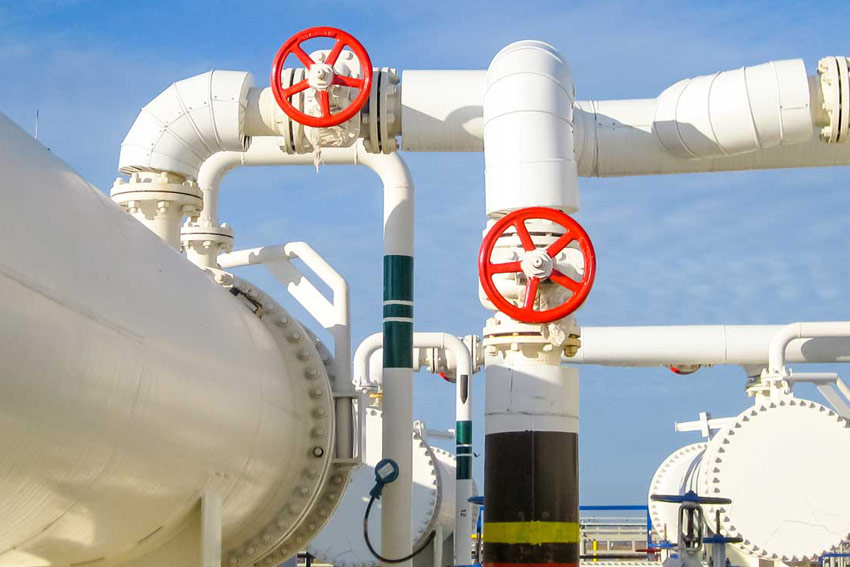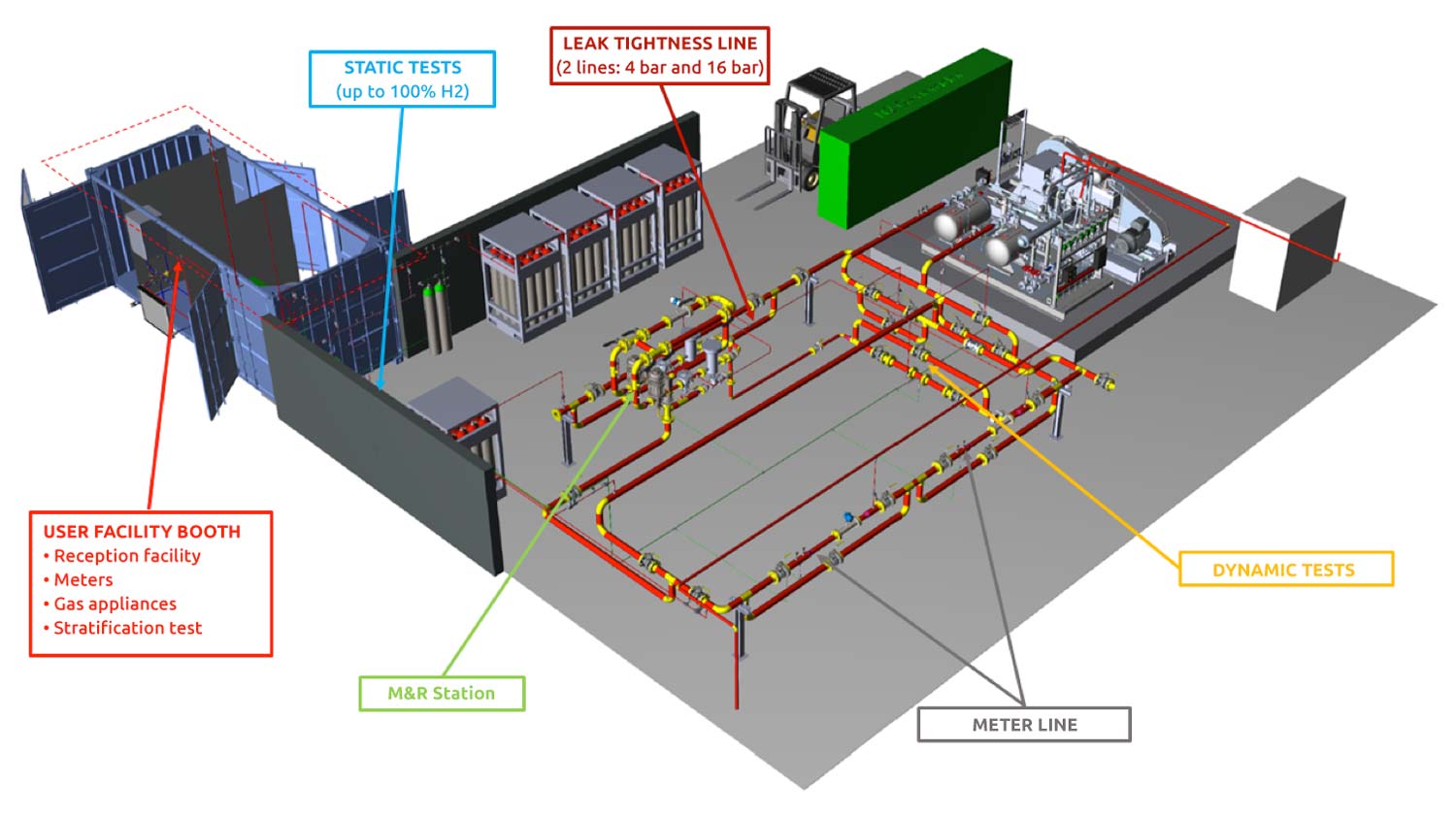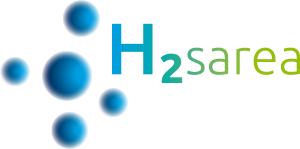H2SAREA Research and Development Goals
H2SAREA seeks to research and develop the necessary technological solutions for the safe distribution of H2 and its mixes with NG in the natural gas network. The following are the main activities to be undertaken:
- Researching and developing technological solutions in key materials, components and systems for the distribution network: researching the response of valves, pipes, meters, and M&R (key elements of the distribution network), when exposed to H2+NG under different operating conditions, and developing: Smart fasteners, H2 compressors, H2/CH4 separation system, H2/CH4 sensors, CERAMAT burners for H2/CH4 boilers and appliances, which are compatible (joint solution) for the safe conversion of the current H2 distribution network.
- Analysing the capacity of the distribution network.
- Designing and constructing a research platform (Hydrogen Loop, H2loop)to research and assess the materials, components and systems. The platform will simulate the future hydrogen distribution network and its mixes with natural gas.
- Researching systems to inject H2 in the network that allow an adequate NG mix with natural gas to avoid high H2 concentrations in certain locations that can lead to deterioration due to H2 embrittlement or permeation in materials.
- Researching and developing smart fasteners (tightening systems) to be used in facilities with explosive gases, specifically for the H2+NG distribution network, and which allow tightening strategies and their monitoring to be established, to avoid H2 leaks in the critical circular flanges of the distribution network containing the H2+NG mix.
- Developing a NG+H2 compressor NG+H2 (2% – 20%) for pressures of up to 16 bar and costing 40% less than those existing on the market, due to an optimising of the parts and materials making up the compressor.
- Researching and developing a new 300-bar compressor capable of compressing a NG-H2 mix so that it can be used in CNG stations.
- Researching and developing a HS/CH4 separation system prototype that allows the mix ratio to be adjusted as per the required specifications.
- Researching and developing new sensors for measuring/monitoring gas mixes as a key part of the safety systems required in the network to distribute H2 and its mixes with NG.
- Characterising the current application for their use with blending, particularly the CERAMAT burner for condensation boilers.
- Researching and developing a diffusion burner using CERAMAT technology to use in boilers with 100% H2.
- Better knowledge of the behaviour/response of infrastructures in contact with H2 and its mixes with NG under different operating conditions (gas mix concentration, pressures, etc.).
- Conducting a H2 blending pilot project and designing full scale H2 injection position.
- Running a 100% hydrogen residential gasification pilot.
The aforementioned activities are considered necessary for the safe use of H2 and its mixes with natural gas in the distribution networks.
The H2SAREA project will provide the necessary knowledge and technological solutions to convert the current distribution network for H2+NG in the BAC.


Commercial and strategic goals
- Consolidate the commercial and technological positioning of Basque companies in the hydrogen and natural gas distribution sector.
- Give momentum to Basque companies in the differentiation strategy with products of greater added value and a H2SAREA joint solution versus discrete solutions that allow companies to generate a great impact compared to the current unit sales for a growing market.
- Become benchmark suppliers (distribution, supply of equipment and components, and sensorisation, in hydrogen application, according to the H2 value chain in the Basque Country as per the Outcome Report of the Energy Cluster Association’s Hydrogen Technologies Working Group. December 2020).
- Get a competitive jumpstart by means of the range of new high-performance and value-added uses and products (conversion of the network to distribute H2, high pressure H2 compressors, sensors, fastenings, H2 combustion boilers and H2/NG separation systems) for the hydrogen sector.
- Contribute to the sustainability of the companies by means of joining a new growing business with safe and smart solutions as a diversification and differentiation strategy.
- Gain market share, boost turnover and increase the companies’ profit margins. Turnover as of 2050 is forecast to be between €1,5 and €8.3 billion, taking into account the FCH-JU scenario and the EVE [Basque Energy Board] hypothesis.
- Directly contribute to the new Energibasque strategy.
Furthermore, the H2SAREA project is fundamental for the country, as it will provide the necessary knowledge and technological solutions to convert the current natural gas infrastructures in the H2+NG distribution network in the BAC.
Technical goals
- The project partners to work together to identify and specify the specific needs of each technical development to achieve joint solutions for the technological challenge of distributing H2 and its NG mixes.
- Define specific characteristics to be met by the critical elements of the H2+NG distribution network, by means of the detailed study of the influence of the operating conditions (type of static and dynamic NG-H2 mixes, pressures, H2/NG concentration ratios, etc.) in the response of the main materials, components and systems, intervening both in the gas distribution network and in the users’ facilities and appliances: Materials (e.g. pipes), Flanges, Valves, Meters for the new H2 and H2+NG distribution network (types: turbines, ultrasonic, rotary), Metering and Regulation Station (filter, heat exchanger, regulator, meter, pressure and temperature transducers) for the conversion of the distribution network for H2 and H2+NG.
- Study the permeability of the plastic materials according to the H2 and NG concentration percentage.
- Identify the “critical points” of the distribution network, the impact of the levels of the H2+NG mix in the critical components and the infrastructure (hydrogen pipeline). They are all aspects required to develop innovation to address the existing barriers in the regulations, codes, standards and technology, by means of systematic validation.
- Research systems/methods to inject H2 in the network that allow an adequate NG mix with natural gas to avoid high H2 concentrations in certain locations that can lead to deterioration due to H2 embrittlement or permeation in materials.
- Develop: i) New smart fasteners (tightening systems) to be used in facilities with explosive gases, specifically for the H2+NG distribution network; ii) smart fasteners that allow tightening strategies and their monitoring to be established, to avoid H2 leaks in the critical circular flanges of the distribution network containing the H2+NG mix; and iii) Designing critical flanges for the H2+NG distribution network.
- Develop high-pressure compressors focused on H2 compression. Specifically, produce a compressor that compresses NG+H2 (2% – 20%) from 3 bar to 16 bar, prepared for H2 compression, as it will be gradually introduced together with the NG. A compressor based on NG technology prepared for partial H2 compression will therefore be developed. This new hybrid compressor is much more competitive than a H2 compressor. This technological breakthrough will be based on ionic liquid technology, pressurisation of the crankcase, elimination of leaks and magnetic coupling, in order to be able to develop a totally innovative compressor that is unique on the market, and capable of compressing a mix of H2 and NG. Thus, the aim is to bring to market a new range of totally innovative range of hybrid compressors.
- Develop a new compressor capable of compressing a NG-H2 mix (2-20%) up to 300 bar so that it can be used in CNG stations.
- Researching and a HS/CH4 separation system prototype that allows the mix ratio to be adjusted as per the required specifications.
- Develop new sensors to measure priority gas mixes (H2/NG) for the safe network.
- Characterise the current technology in boilers and specifically in CERAMAT burners for the combustion of NG-H2 mixes. Mixes of 5, 10 up to 50% of H2-NG will be tested.
- Research and develop new CERAMAT burners for H2 combustion and complying with the requirements of the leading boiler manufacturers. Particularly focused on developing a conversion kit to convert conventional boilers to adaptable systems to work with 100% H2.
- Research into the new CERAMAT burners for H2 taking into account the modulation, power and flashback. The aim is to develop solutions that allow the features of current boilers to be kept and adding decarbonisation.
- Improve knowledge of H2 technologies, hydrogen embrittlement and cracking in materials, H2 degradation phenomena in polymer matrix materials, H2 leaks, instrumentation (sensor), high pressure H2 compression, burners, inter alia, solutions needed for all the companies and RCTVI (Basque Science, Technology and Innovation Network) of the H2SAREA to face the challenges raised.
- Conduct a blending pilot project and design full scale H2 injection position.
- Run a 100% hydrogen residential gasification pilot.
- Develop an R&D platform (H2Loop) that allows the functioning of the infrastructure and the “H2SAREA” developments achieved to be researched, assessed/validated (regulatory and technical conditions) in a representative environment of the gas distribution network for different H2/CH4 conditions, pressure, etc.
- Identify and assess/validate the functioning of the developments achieved in the project in the “H2Loop” representative environment.
- Determine the impacts of the different H2 concentrations with NG in the facilities of end users and appliances operating with gas.
- Develop a joint solution, envisaging its compatibility/connectivity with other components (in terms of unions, materials, sensors and their communications, etc.) in the design and manufacturing phase.
- Establish technical recommendations for the safe distribution and use of H2 in the natural gas network.
H2LOOP research platform

Environmental goals
- Contribute to the decarbonising of the economy.
- Contribute to the goals of the new policies (*) and the revision of the Renewable Energy Directive for 2030 (renewable energy of at least 32% and an energy efficiency target of at least 32.5%), with emissions being reduced for the whole EU by around 45% by 2030 (compared to 1990 GHG).
- Hydrogen is a main contributor to enable greater penetration of renewable sources in the electricity mix, providing large-scale storage and sectoral coupling (electricity – natural gas). This will allow the surplus renewable electricity production to be absorbed and converted into a gas that can be used in other energy sectors.
- The distribution of hydrogen through the natural gas network (converted) will result in lower energy consumption associated to the compression and transporting of hydrogen of the conventional processes.
- The system based on advanced membranes to be developed in H2SAREA is more efficient than the alternative separation technologies, and also reduces the energy consumption and cost of H2 (Hydrogen recovery factor >85%; Energy consumption < 5 kWh/kgH2; H2 cost < 1.5 €/kgH2).
- H2SAREA helps to avoid gas leaks by means of developing smart fastenings.
- Greater harnessing of the current natural gas network and its use to distribute renewable hydrogen.
- Reduce operations and maintenance of the facilities in question by means of lengthening the service life of the products developed, and achieve a positive environmental impact by reducing raw materials and energy consumption.
(*) COM (2016) 767.2DIRECTIVE OF THE EUROPEAN PARLIAMENT AND OF THE COUNCIL on the promotion of the use of energy from renewable sources (recast).
Training and dissemination goals
- Contribute to the training of human resources specialised in hydrogen technologies, science and material engineering and their processes, and design components to be applied in the hydrogen sector.
- Disseminate the project deliverables (taking into account the constraints related to the confidentiality of the developments). [e.g., through the Energy Cluster].
- Create a regular newsletter with the project breakthroughs.
- Create a project image and a website.
- Publish the results at congresses, in scientific publications and trade fairs, e.g.
- Hydrogen Congresses /Trade Fairs (WHTC, WHEC, EHEC, Hannover Fair,…)
- Membrane Congresses (ICOM, Euromembrane, NAMS, Aachen Membrane Colloquium…)
- Hydrogen Journals (International Journal of Hydrogen Energy,…)
- Membrane Journals (Journal of Membrane Science, Membranes MDPI,…)
- Sensor+Test
- Organisation of a session to present the results in the Basque Country.

